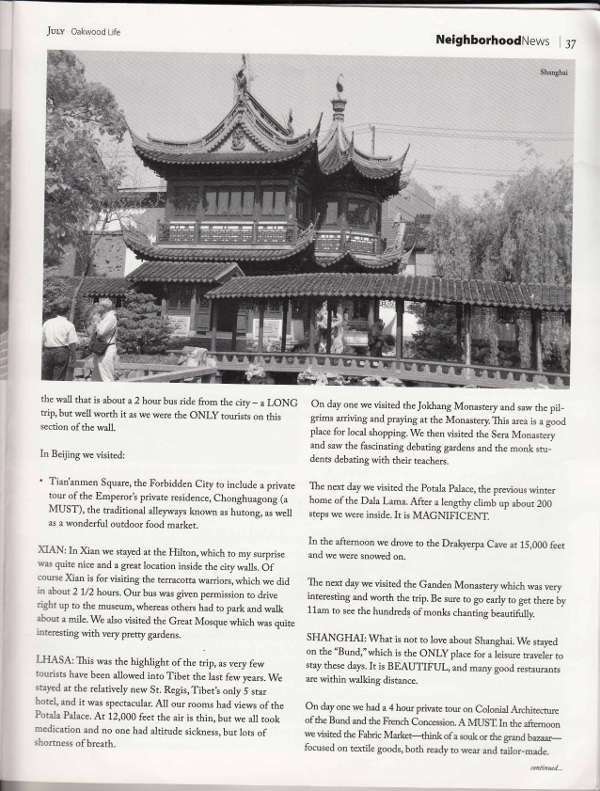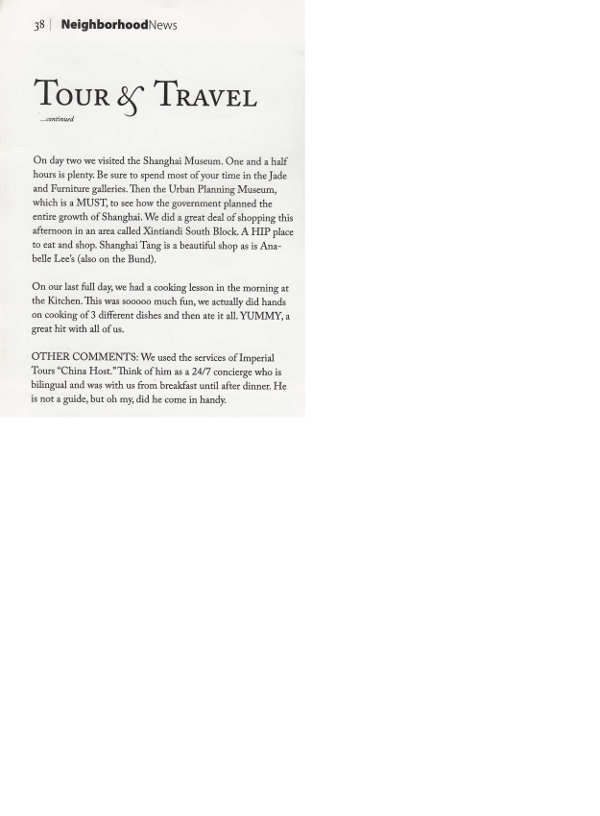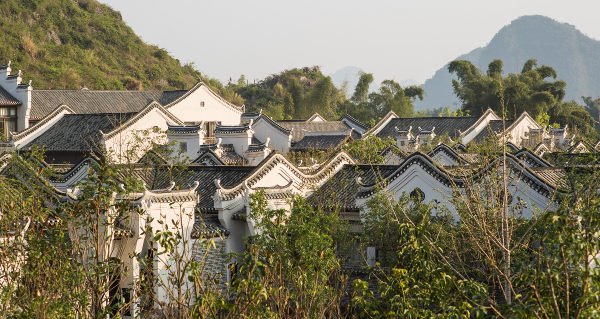
The importance of the Banyan Tree Yangshuo is that at last overseas visitors have a base to explore the delightful beauty of the stunning rural landscape in this area beyond the limiting urban environment of Guilin. For the sake of its economic viability, this 142-room luxury property strikes a balance between catering to the demands of both overseas and Chinese visitors. Although the nearby village one drives through to get to the hotel is no oil painting, Banyan Tree has done a great job of borrowing the riverside landscape to be the main actor within their property.
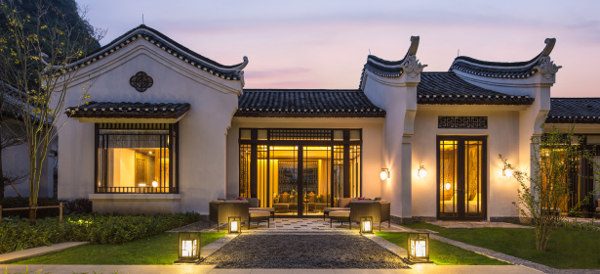
Fans of the Banyan Tree Lijiang, their seminal China resort that served both to promote Yunnan province to overseas visitors and to set Banyan Tree as the bar for premier luxury resort brands in China, will understand the genesis of key features of this Yangshuo property. For example, whereas Banyan Tree Lijiang opened with spacious courtyard villas and added more affordable smaller suites a few years later, the Yangshuo resort offers both from the get-go. There are six sets of two bedroom with adjoining one bedroom river-view villas along the banks of the Li River. The next option is a set of 1-bedroom garden view villas in the center of the complex, the views for which are turned in on themselves behind a high surrounding wall. Otherwise, clients can choose either the Garden or Mountain View suites, spaciously apportioned on the lower and upper floors of five sets of two-story buildings, stationed around the encircling perimeter of the property pointing in the direction of the river.
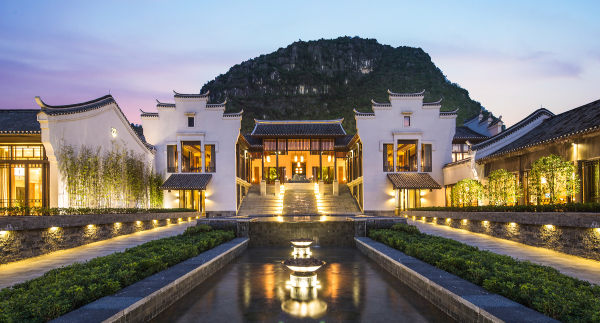
In a central building housing the lobby, bar and terraced café with a sensational view, the hotel offers two dining options, a western restaurant and a Chinese, the latter offering a considerably higher standard of fare. Of course, Banyan Tree is known for its spa and this one does not fail to deliver with a crew of Thai practitioners offering appropriate pressure and skills at prices – approximately US$150 for 60 minutes – that are reasonable by western standards but high for Chinese guests who can find a skilled TCM doctor for a fifth of the price in more mundane surroundings.
What is exceedingly surprising given how well the area lends itself to family stays is the limited size of the one outdoor swimming pool and its adjacent tiny baby pool. Given the tropical climate and that guests are unlikely to hurl themselves into the Li River for a swim, one would have expected both a family and an adult pool in addition to the baby pool. One trusts that should this feature prove popular, this addition will soon be forthcoming. Although swimming is not popular amongst Chinese adults, the younger generations have proven themselves to be absolutely crazy about it.
No plans yet for spring break? Consider China. Whether you’ve always dreamed of going to China, or you’ve visited before and are now ready to introduce your children to the destination, Imperial Tours’ 12 day private Spring Break Tour will amaze you and your family as we welcome you as distinguished guests to The Middle Kingdom…in style.
As soon as you arrive, each child will be given an activity book customized for your particular trip which will include things like treasure hunts and other fun activities. No matter their age, your children will remain engaged, entertained and fascinated by this beguiling country.
Start your adventure in Beijing where you’ll experience the Forbidden City, once home to 24 of China’s Emperors. Learn traditional Chinese paper cutting, visit the Beijing Zoo, and explore the Great Wall of China atop which you’ll be treated to a gourmet lunch while Shaolin Warriors give you a private martial arts performance. If they wish, your kids can participate in the show. Your unique Great Wall experience ends with an egg hunt on the Wall itself!
Next you’ll visit Xi’an to learn about China’s ancient history while visiting the Terracotta Warriors made for China’s first Emperor. From there you go on to Guilin to see the beauty of China’s rural landscape. Here you’ll experience a simpler way of life with bike rides, a bamboo raft ride, and visits to villages where you can meet the locals, wander through rice paddies, and learn how to make soy milk and tofu.
You finish your journey in Shanghai, or the “Paris of the East”, where you will learn to navigate the famous wet food markets while selecting produce for your personal Shanghainese cooking lesson. You go on to tackle Kung Fu with a master who has trained since the age of seven, visit the renowned Shanghai Museum – the best museum in all of China – and be whizzed around the intricate city streets in vintage motorcycle sidecars.
To further customize your trip to China, you may wish to choose from a plethora of optional experiences such as:
Why not spend your spring break seeing what makes China the powerful political, business, and cultural hub it is today? Check out our 2015 Spring Break Itinerary and introduce the next generation to all that China has to offer.

Now when traveling on an Imperial Tours Majestic Tour or an Ultimate China private tour, you will have free access to the internet outside the doors of your hotel. Imperial Tours’ China Hosts will be equipped with a mobile Wifi device so that guests will be able to surf the web and keep in touch with friends and family while traveling throughout the country. This means that while on a scenic drive through China’s idyllic countryside, you can email your friends and tell them what they are missing. Or, you can post on social media a photo of yourself enjoying a white linen banquet atop the Great Wall.
Travelers should also bear in mind that websites such as Facebook, Twitter, YouTube and from time to time Google and Gmail are inaccessible from China. Travelers who wish to use these sites during their travels in China should equip their devices with VPN software. Once installed, it is straightforward to connect with these websites.

Guy Rubin of Beijing-based Imperial Tours talks about the latest trends in China in travel, including the emergence of Lhasa as a hot destination.
See full interview here
It's getting late on a Thursday night. You have a big FIT itinerary to sort out before you leave the office so you order in some Chinese takeaway and put your head down to finish the job. The sky is darkening outside the window pane when all of a sudden there is a blinding flash of light and a flying saucer swoops out of the night sky to hover to a standstill outside your office. A steel platform unrolls, a door opens and a red and green alien slithers like a massive snail down the platform and into your office.
"I looked up your agency on the internet as I came out of hyper-space, and wonder if you can help me with a travel question," explains the alien using a translation application. In your open-mouthed amazement, you say nothing. The alien continues, "I am on an intergalactic journey and only have 10 days on your planet. I don't want to rush unnecessarily. I have the wife and kids in the back of my saucer and I want to show them the best that Earth has to offer. It's our first time here. My friends told me that both Italy and China have had a massive impact on your civilization and so I wanted to ask your advice on which one I should visit?"
Before you can say anything, your colleague answers, "Over the past thirty years, we have had great success with earthlings in Italy and so we know it like the back of our hand. By contrast, China is a bit of an unknown quantity to us, and so we would strongly recommend Italy for your first ten days on our planet."
"I was expecting you to say that," retorts the alien knowingly, "because I was pulling up the data and saw that most luxury travel agents sell fifty to sixty times more Italy than China. What you are recommending ties in with the last 30 years of your travel sales. Thing is I don't feel it's as clear cut as that. After all China and Italy both have beautiful landscapes, amazing cuisines, friendly people and stunning cultural sites. But as we were flying in, my wife got involved and she looked up the price of the Cipriani. Do you know what an entry level room goes for! Meanwhile, the Peninsula Shanghai which won best Virtuoso hotel two years ago is a fraction of the price… Similarly, we looked up the average room size at the Hotel de Russie in Rome and compared it to that of the Shangri-la China World Summit Wing in Beijing… do you know the size difference? And then my daughter found this terrific little company called Imperial Tours who can do all kinds of cool things like a banquet on the Great Wall or a private gondola with orchestra on Hangzhou's West Lake. She asked me how much it might cost to organize a banquet in the Colosseum and whether union rules would allow for an orchestra inside a gondola in Venice? It seemed to us that China would be about 40-50% cheaper than Italy on a like for like basis, offering a similar level of quality and a similarly amazing set of experiences.
At this point, there is a ring on the door bell and in walks the Chinese delivery man, bringing the food you ordered earlier. "I couldn't help but overhear your conversation from outside the door," he begins. Turning to the alien he adds, "but there is one thing that China has that Italy doesn't have, nor France, nor the UK, nor Switzerland, nor the rest of this agency's top selling destinations."
"What's that?" asks the alien.
"The Future," he answers.
Then turning to you and your colleague, he continues "and there's something else that you might also not know. According to data from Virtuoso, a luxury travel consortium, travel agents on average make 2.3 times more selling China than other destinations because people go for longer and usually require more services when they're there."
—
So the question now is: on which side of history do you want to be? Do you want to continue to reflect what's happened on planet earth for the past 30 years, or do you want to be on the right side of the future and invest in learning about China?

This past June, Guy and I were fortunate enough to be invited by Shangri-la Hotel to their new hotel in Lhasa as a part of their Advisory Board meeting (Guy is on the board). I hadn’t been to Lhasa in almost ten years and the last time we were there, the Lhasa Hotel was the best on offer. Since then, both the Shangri-la and St. Regis hotels have opened, giving luxury travelers a chance to experience this unbelievable culture without having to sacrifice those creature comforts with which we’ve become all too accustomed.
The St. Regis has now been open for 6-7 years and unfortunately, time is already taking its toll. Fortunately though, the Shangri-la has opened and within one week of opening, managed to satisfy and surpass the expectations of some of the travel industry’s most elite members.
The Shangri-la is located in the west, outside the old city, but very close to the Norbulingka (the Dalai Lama’s Summer Palace). Another nice feature is that it is located next to an older Tibetan village so that as you drive up to the hotel, you see traditional Tibetan rooftops, giving you a real sense of place. The hotel also tries to keep Tibetan elements alive throughout the hotel, whether it be in patterns in upholstery and woodwork, the dress of the front desk staff, to traditional breakfast items at the morning buffet.
The room product is amongst the best in the city, with entry level starting at 43 sqm and some on the upper floors with distant views of the Potala Palace. The next category is a Premier room which is very nice at 61 sqm. There are also several types of suites, with the entry Executive Suites consisting of a separate living room and bedroom and 1.5 bathrooms and very comfortable. Larger suites had not yet opened.
Food in the hotel was great in a city where many ingredients need to be imported. We were treated to a wide array of cuisines from fusion Tibetan (since yak butter mixed with tsampa or raw barley isn’t to everyone’s liking), to Western bbq with delicious local purple yams and lamb to refined Chinese. The breakfasts were also plentiful with something for everyone.
All in all, the Shangri-la is a highly welcome addition to the Lhasa hotel scene.

The Sofitel hotel has just opened their Sofitel Legend People’s Grand Hotel in the heart of Xi’an. Located inside a landmark building that started as one of the city’s state guest houses for visiting dignitaries, the Sofitel group has pared down a 400+ room hotel to one with just 71 rooms and suites. The décor is old world luxury, with the smallest room starting at 45 sqm. Views from the breakfast room and the pool are lovely, looking out onto dozens of trees, each of a different variety and some as old as 500 years.
The General Managers of both the Sofitel People’s Grand and the larger complex (housing several different Sofitel brands) both hale from Maldivian resorts and are bringing the charm of the small hotel feel to the Grand. This includes butler service for all rooms and a sense of intimacy that is a welcome addition to the city.

 China has been a world superpower twice already, and in the near future it is set to have a major impact both on our lives and those of our children and grand-children. So then, given its relevance, doesn’t it make perfect sense as a destination for a family trip? Just because you’re on vacation does not mean that your holiday can’t be educational and eye opening. Bring your kids to China over spring or summer break and expose them to the country’s history and culture as well as its modern development. Let them visit with the founder of a hi-tech business incubator that is fusing contemporary art, technology and business in a creative new setting. Or else, have them tour Tiananmen Square with a former freedom fighter to understand China’s road to economic reform and its evolving political relationship with its people. Tour a Shanghai university with a scholar to compare Eastern and Western educational systems; find out how science, technology, engineering and math (STEM) are taught differently here and why these subjects are stressed in Chinese culture.
China has been a world superpower twice already, and in the near future it is set to have a major impact both on our lives and those of our children and grand-children. So then, given its relevance, doesn’t it make perfect sense as a destination for a family trip? Just because you’re on vacation does not mean that your holiday can’t be educational and eye opening. Bring your kids to China over spring or summer break and expose them to the country’s history and culture as well as its modern development. Let them visit with the founder of a hi-tech business incubator that is fusing contemporary art, technology and business in a creative new setting. Or else, have them tour Tiananmen Square with a former freedom fighter to understand China’s road to economic reform and its evolving political relationship with its people. Tour a Shanghai university with a scholar to compare Eastern and Western educational systems; find out how science, technology, engineering and math (STEM) are taught differently here and why these subjects are stressed in Chinese culture.
While these may all be experiences you want for your child, if you were to ask what his or her dream trip would entail, would it include holding a baby panda or taking a ping pong lesson with a former Olympic coach? Or maybe it would involve a bike ride on an ancient city wall or flying a kite on the Great Wall of China.
So is a trip to China fun or educational? The answer, of course, is both.
Imperial Tours has put together a sample Spring or Summer Break Trip to China for families of three or four. Feel free to customize this trip in whatever way you wish to suit your traveling style, duration, family size or interests. Contact us to tailor an itinerary specifically designed for your immediate or multi-generational family.

